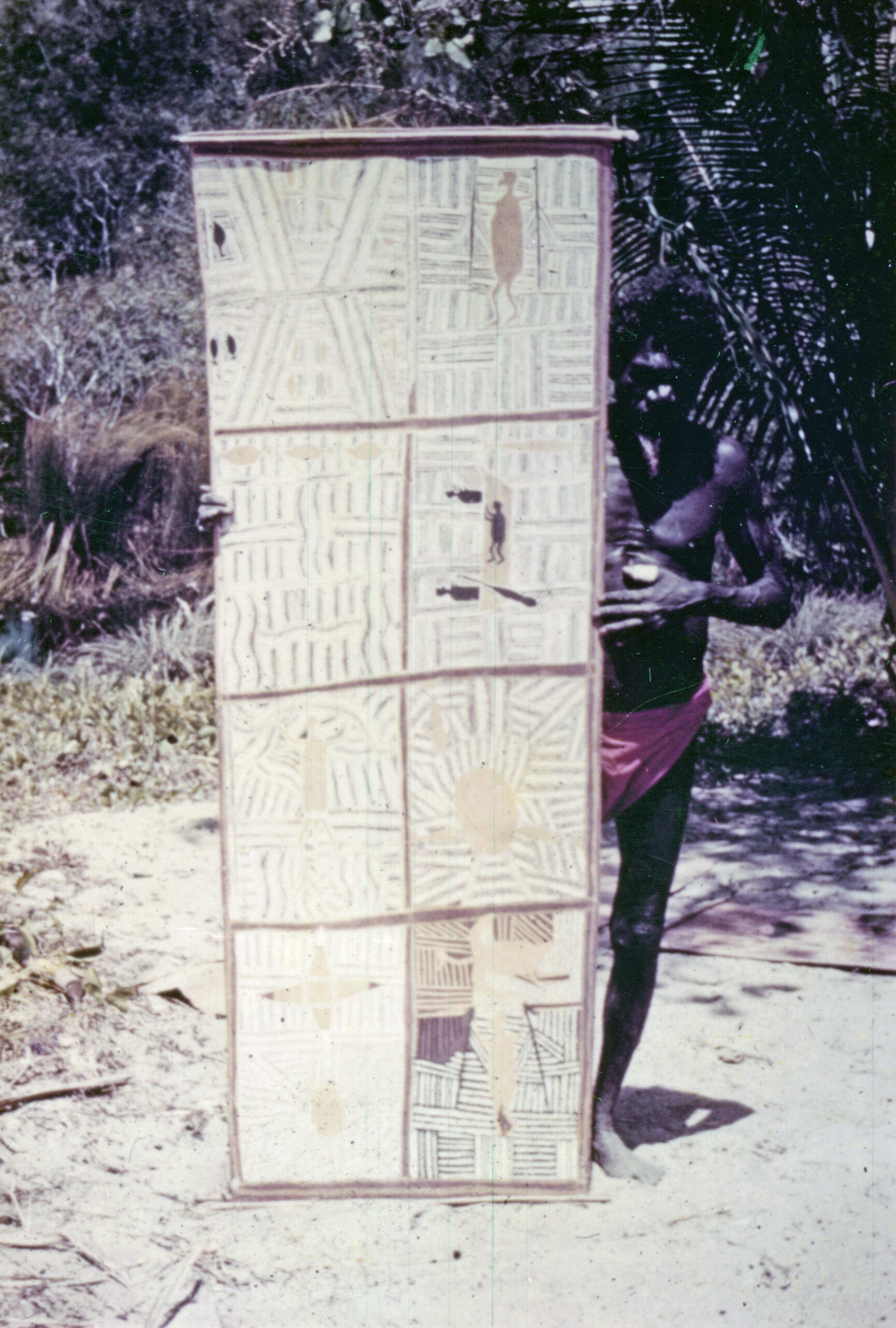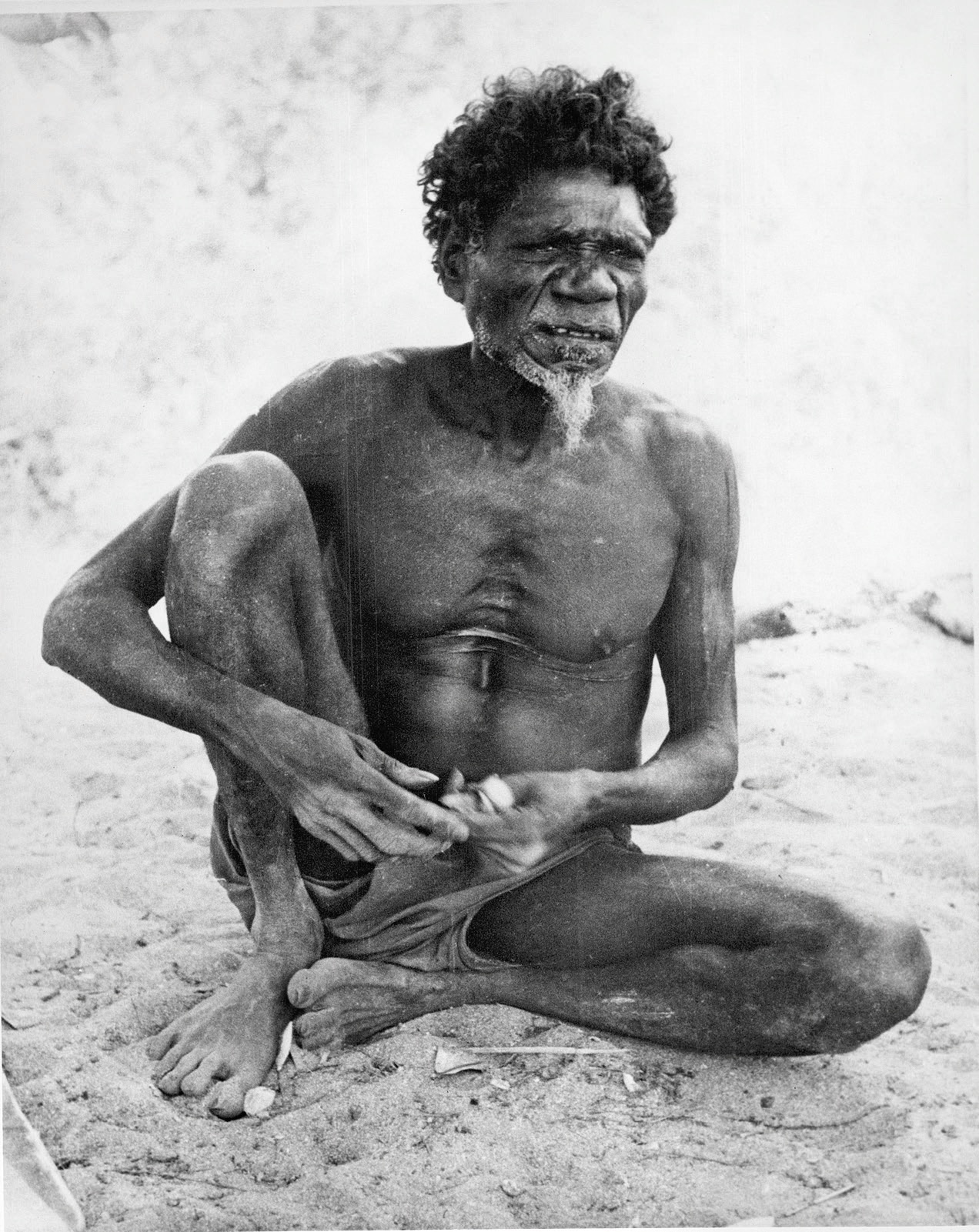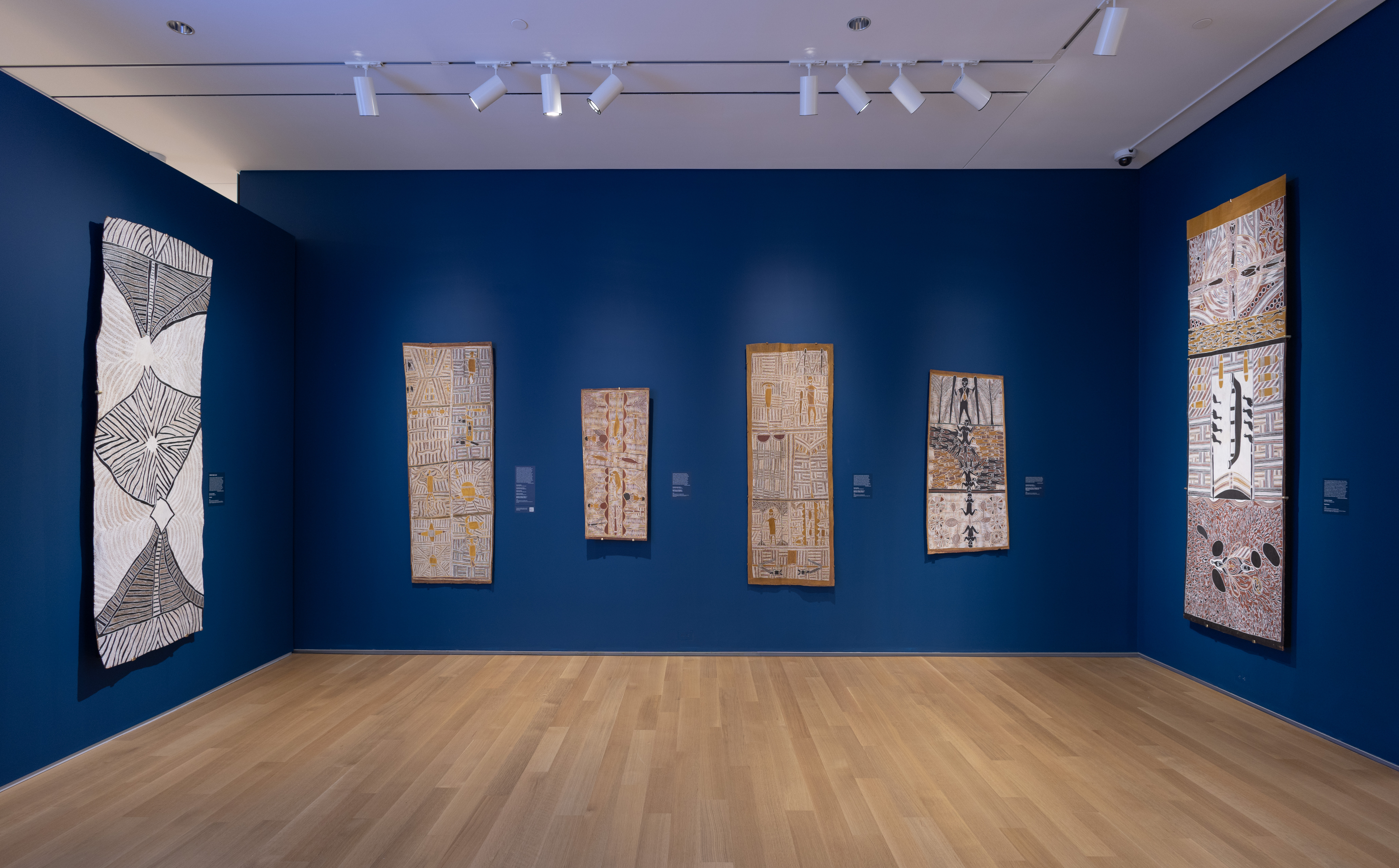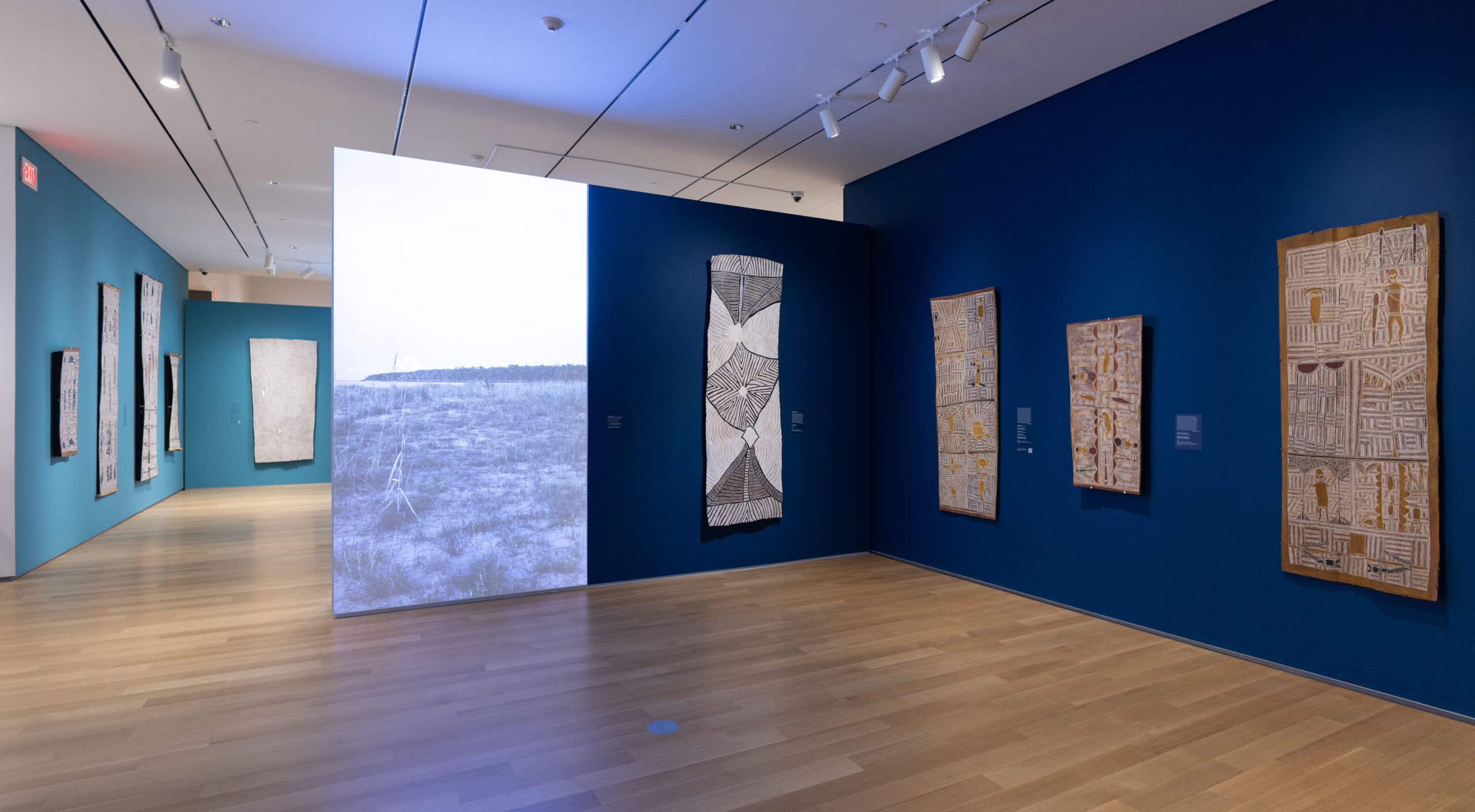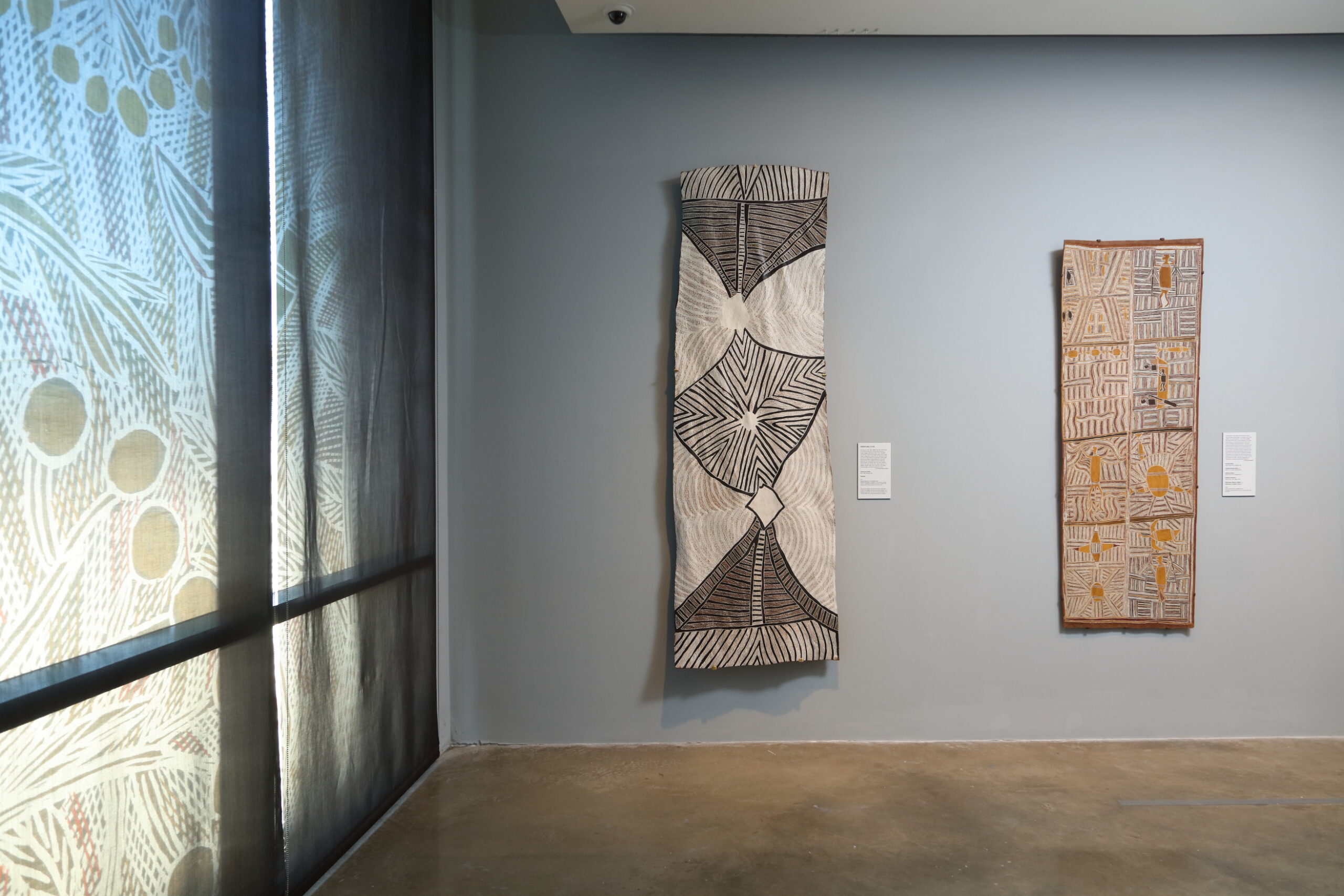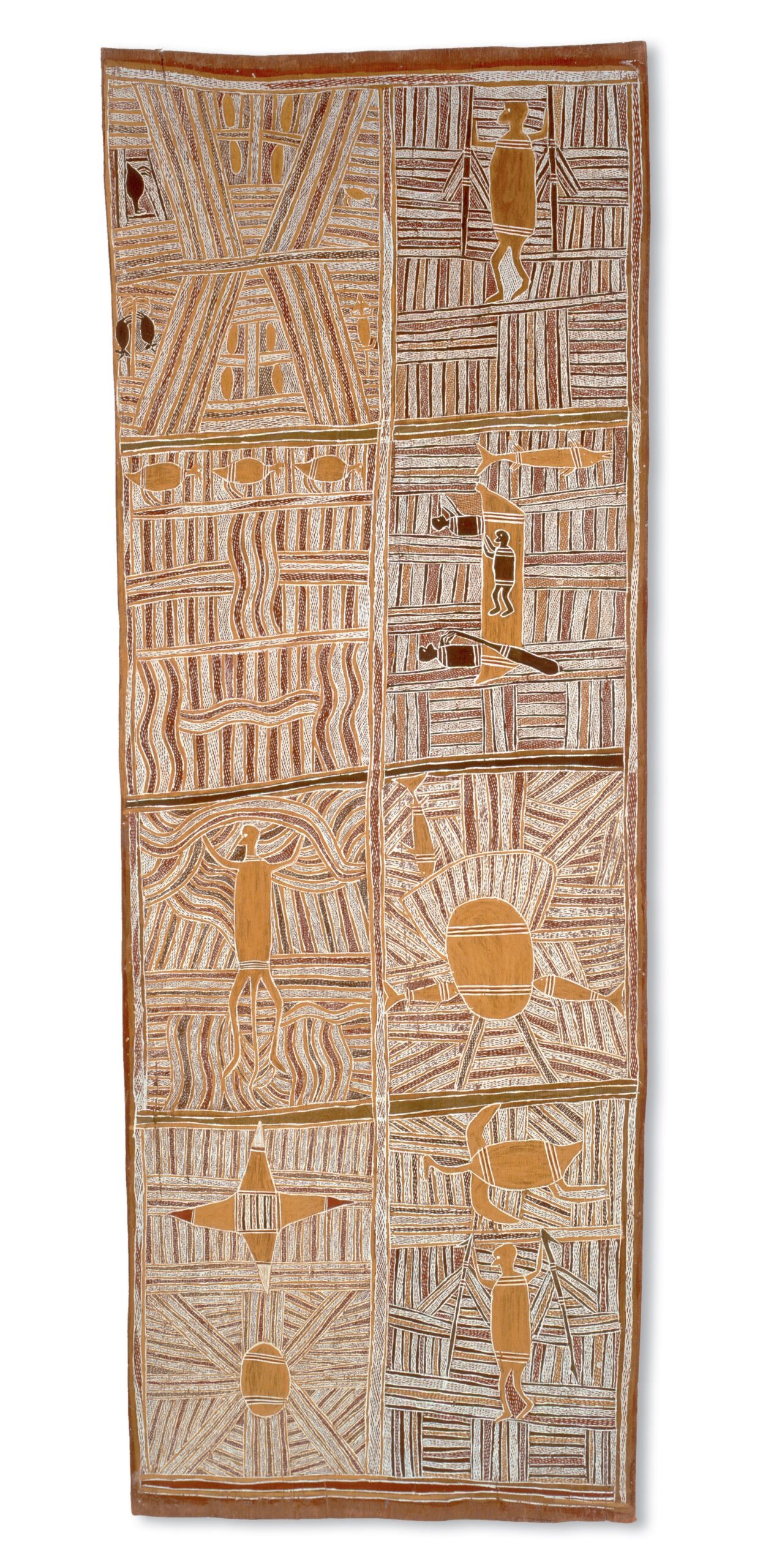
"Djan’kawu—two sisters and a brother—arrived here from the spirit world Burralku (also called Gulwayulwa, Gulirrwulirr, Ninimbiyarra, and Djanbamagarr). On the horizon, they saw the thunder cloud Wulma Birrwirryuwanawan, which gave them the idea to journey across the sea by dugout canoe. They talked among themselves, making preparations, and put their sacred objects in the dugout canoe and began paddling. The paddle they used was the Mawalan.
They began their travels in the afternoon, and on the way, night fell. As they paddled, they punched the water with the Mawalan, and spring water came up. The water was freshwater, but the Djan’kawu knew that somewhere, something was making the water salty. And as they journeyed, they saw all the sea creatures, and they sang them. They were singing and adding all the fish, whales, octopuses and all the sea birds. They were all sung and added just as they are, Malabuŋunbuŋun Yandalyandal Matjarra, all out of their ŋaṉmarra (conical mat). Anything that moves, Malabuŋunbuŋun Yandalyandal Matjarra, was taken out from the conical mat and sung by the Djan’kawu.
And they saw the morning star: the first morning star, and then the second and the third. The stars were getting close to Yalaŋbara, giving the Djan’kawu a pathway and showing them the land before the rays of the sun lit up Yalaŋbara’s sandhills. And they followed those stars, up to where the third star was, high and starting to fade away, as the daybreak came. And then the sunrise: the ray of the sun came up first and shone upon Bäḻma Yunumu at Yalaŋbara.
They were getting close to the land. And they came to three rock islands called Wulpinbuy, Garrangarranbuy, and Bawuli. It was early in the morning, and they could hear water crashing from those rocks and they saw lorikeets coming out from the rockholes.
They saw Djambuwal, the Thunderman, sitting at a place called Djirrkawul. Onward they traveled, toward the island of Ga’kubawuy, coming up toward Waḻinyina, passing through Bilapinya and arriving at the shore of Bipinyina at Yalaŋbara. They were throwing their armbands and headbands onto the water as they were coming close to the shore at Yalaŋbara. "
– WANYUBI MARIKA
More Info
In 1959, Art Gallery of New South Wales deputy director Tony Tuckson traveled to Yirrkala with collector and surgeon Dr. Stuart Scougall. They were accompanied by Scougall’s wife Margaret, his assistant Dorothy Bennett, and the artist Sali Herman. The aim of the visit was to commission large-scale works for the Gallery’s collection. This was one of the first instances of an Australian state art gallery collecting Aboriginal works for their aesthetic rather than ethnographic value.
Among the works collected were a suite of five large paintings by senior Rirratjiŋu artist Mawalan Marika, depicting the epic journey of the Djan'kawu. These large works signaled a profound turning point in the art of Yirrkala. Their scale and ambition would lay the foundations for an effluence of Yolŋu painting, culminating in the Yirrkala Church Panels of 1962.
– Kluge-Ruhe Aboriginal Art Collection
Additional Information
Decade
1959
Medium
Natural pigments on eucalyptus bark
Dimensions (IN)
75 ½ x 27 ½
Dimensions (CM)
191.8 x 69.8
Credit
Art Gallery of New South Wales. Gift of Dr. Stuart Scougall, 1959. IA64.1959
Narrative
Rirratjiŋu
The Rirratjiŋu clan belongs to the Dhuwa moiety. The major spiritual themes relate to Yalaŋbara,...
Songline
Djan’kawu
When I was a child, my father would put me on his lap and sing...
Location
1950s
Following a rise in the demand for bark paintings, two primary motivations emerge for Yolŋu:...
About The Artist(s)
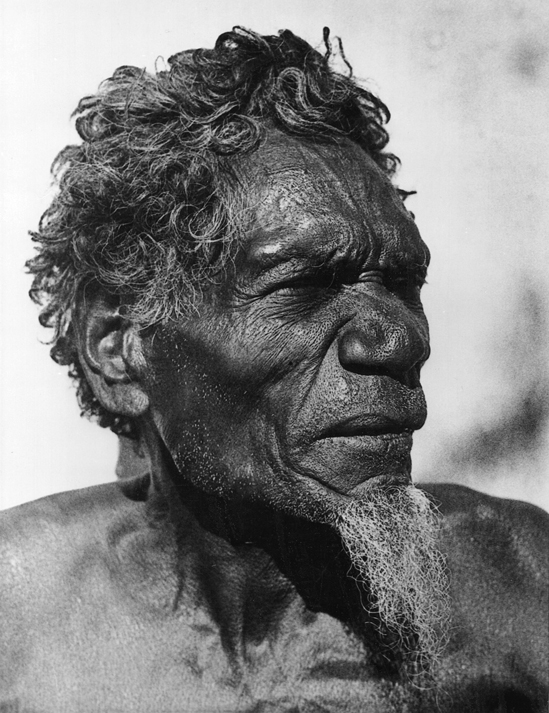
Clan
Rirratjiŋu
Artist Dates
c.1908–1967
Alternative Names
Maulin, Mauwulan, Mawulan, Molun
Mawalan Marika
Mawalan Marika was the head of one of Australia’s most important artistic dynasties. In 1935, he negotiated the establishment of the Methodist mission at Yirrkala. He was instrumental in the painting of the Yirrkala Church Panels and was a signatory to the Yirrkala Bark Petitions. In the 1960s, he broke with tradition by being the first to teach his daughters to paint.
Collections Represented
Art Gallery of New South Wales
Art Gallery of South Australia
Art Gallery of Western Australia
Berndt Museum of Anthropology, University of Western Australia
Kluge-Ruhe Aboriginal Art Collection of the University of Virginia
National Gallery of Australia
Queensland Art Gallery | Gallery of Modern Art
Trinity College Art Collection, University of Melbourne

Clan
Rirratjiŋu
Artist Dates
c.1920-1970
Alternative Names
Madaman, Madhaman, Mataman, Mutamon
Collections Represented
Art Gallery of New South Wales
Art Gallery of South Australia
Art Gallery of Western Australia
Kluge-Ruhe Aboriginal Art Collection of the University of Virginia
Queensland Art Gallery | Gallery of Modern Art
Saint Louis Art Museum
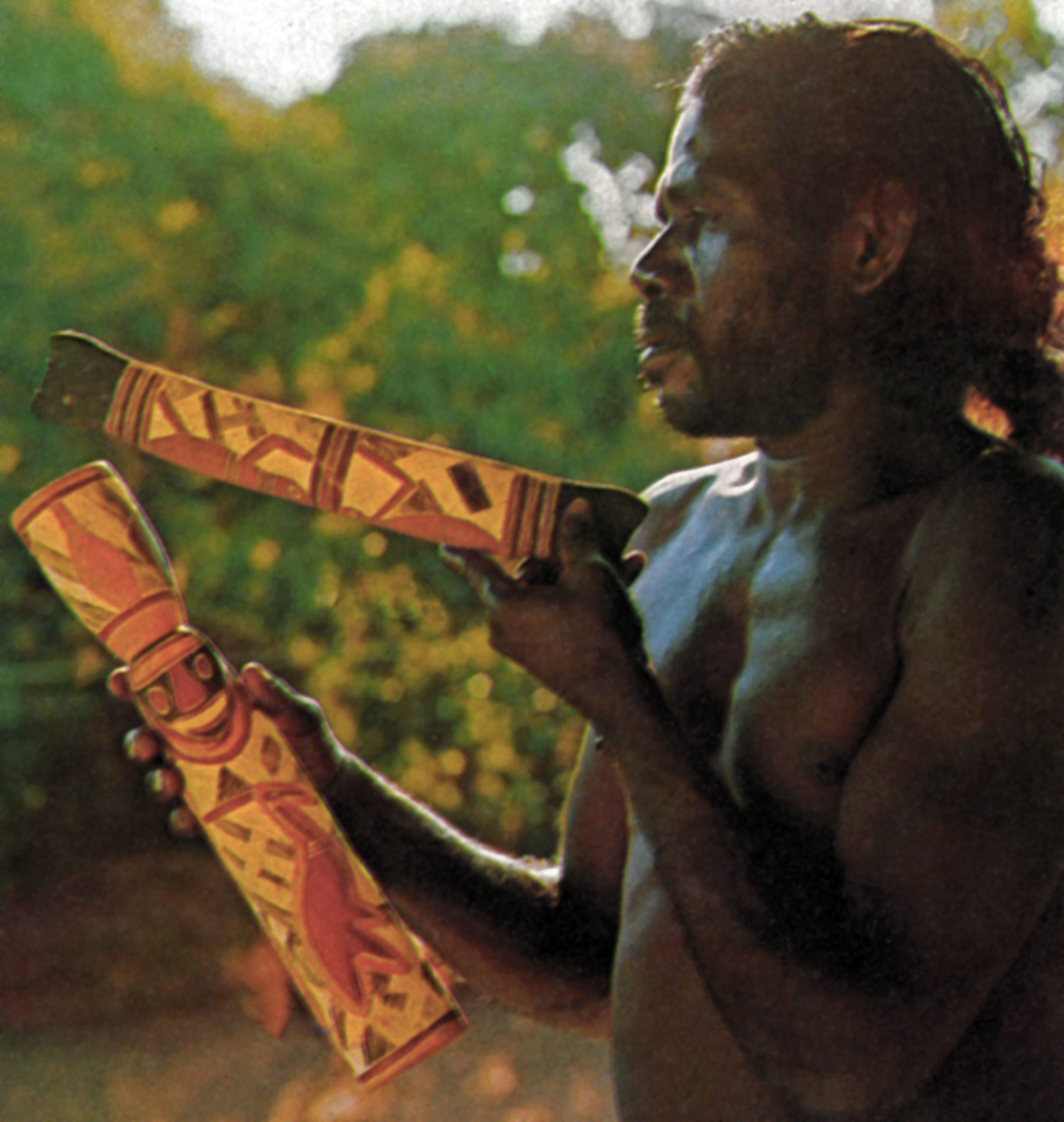
Clan
Ŋaymil
Artist Dates
c.1934–1997
Alternative Names
Peter, Wadaimu, Wadamu, Waremu, Woreimu
Waḏaymu Ganambarr
The brother of Larrtjanŋa Ganambarr, Waḏaymu Ganambarr was taught to paint by Mawalan Marika, assisting him on the painting Djan’kawu Creation Story (1959) commissioned by Stuart Scougall and Tony Tuckson for the Art Gallery of New South Wales. Preferring to live at Galiwin’ku (Elcho Island), he produced a number of works in brightly colored inks and acrylic paint on paper for the collector John Money between 1968 and 1971. He continued producing paintings on bark until his death in 1997, establishing himself as one of the leading artists on Galiwin’ku.
Collections Represented



